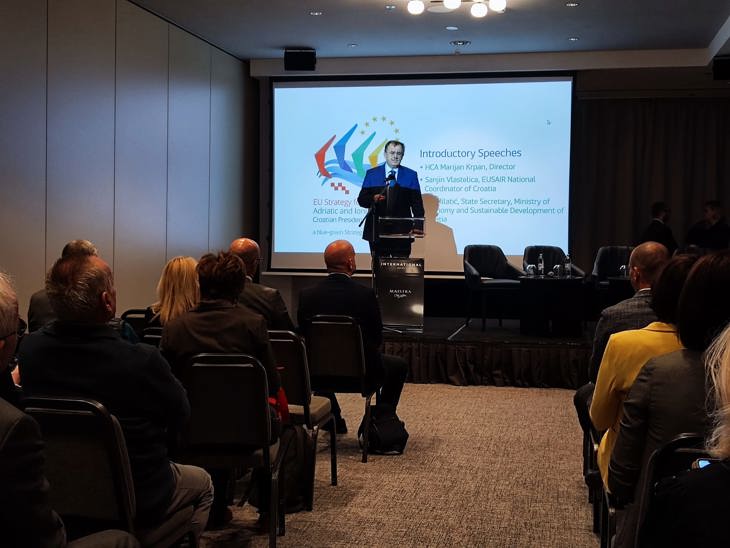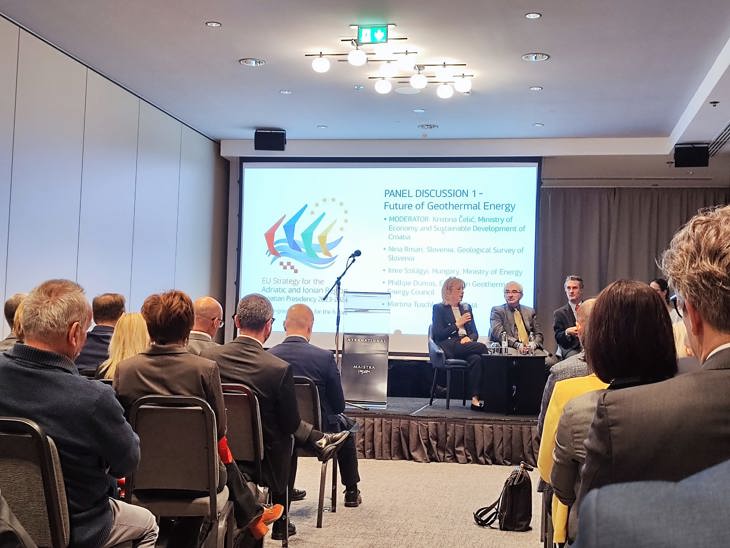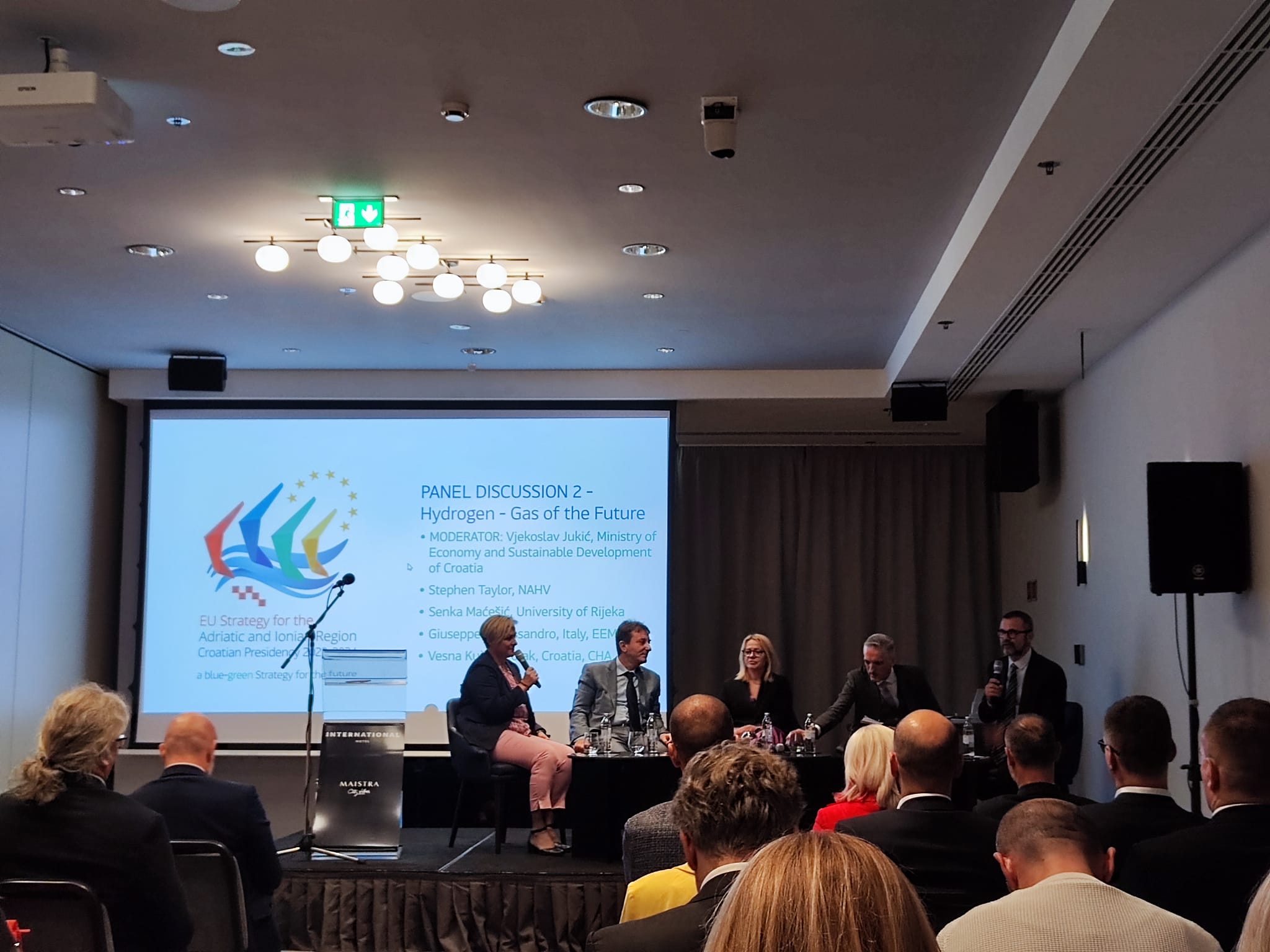Carbon capture and storage technology plays a key role in solving the problem of greenhouse gas emissions from industrial processes and fossil fuels. Croatia has great potential for geological storage of CO2 in northern Croatia - according to a study by the CHA.
Apart from hydrocarbons, which the CHA is primarily concerned with, 2018 has seen the start of something of an energy transition and a move away from hydrocarbons towards renewable energy sources. Due to geopolitical implications and challenges associated with a natural decline in hydrocarbon production, the CHA is undergoing its own transformation and reorientation, turning to greener and renewable energy sources such as geothermal energy, geological CO2 storage and new opportunities for sustainable hybrid energy - according to Marijan Krpan, the President of the Management Board of the CHA, in his introductory speech at the "EUSAIR Energy Round Table on Hydrogen, Geothermal Energy and New Technologies".

In the last five years, the Republic of Croatia has made great progress in activating its geothermal potential. This has been helped by the Law on Exploration and Exploitation of Hydrocarbons, which clearly regulates activities related to geothermal energy, making the whole process acceptable and transparent for investors. We have held several tenders for the use of geothermal energy for heating, for which there is great interest among the local population. We have also started investing in electricity generation, which will play an important role in the stability of supply in the future due to its characteristics as a basic energy source.
On 1 June 2023, the tender for six new exploration areas for geothermal water for energy purposes was closed, and the Ministry of Economy and Sustainable Development issued five permits for exploration areas: Leščan, Međimurje 5, Pčelić, Sječe and Kotoriba.
The Director of the Geothermal Sector, Martina Tuschl, who participated in the panel discussion "The Future of Geothermal Energy", said that thanks to the database of wells available to the CHA, she derives potential areas for investors, for whom this is valuable input data that defines the exploration areas well and confirms the geothermal potential, which significantly reduces the risk and cost of initial exploration investments for investors.

Our recent activities relate to analysing and promoting the possibility of applying new sustainable RES technologies such as hydrogen and CCS.
More about this was discussed at the panel "Hydrogen - Gas of the Future".
Vesna Kučan Polak, Director of Business Development and New Technologies, spoke about the CHA in the framework of the National Hydrogen Coordination Unit.
In this sense, the Renewable Energy Sources Act appointed the CHA as the national coordinating body for hydrogen-related projects.
Our goal is to enable better connection and cooperation of all interested parties in Croatia and the EU, and thus faster implementation of hydrogen projects in the Republic of Croatia.
We have also started the preparation of the Study of the development and implementation plan of the Croatian Hydrogen Strategy until 2050, which will define the implementation areas and projects related to pure hydrogen, i.e. the application of the hydrogen value chain related to the production, transport and distribution, use and storage of hydrogen, as well as hydrogen-related technology.

At the panel discussion "New technologies in the context of decarbonisation", Lidija Božić, Head of the Exploitation Department, spoke about new decarbonisation technologies.
Carbon capture and storage technology plays a key role in solving the problem of greenhouse gas emissions from industrial processes and fossil fuels. Croatia has great potential for geological storage of CO2 in northern Croatia, according to research by the CHA. In addition to storing carbon dioxide in depleted oil and gas reservoirs, there is also the possibility of storing it in deep saline aquifers. Taking into account the results of the study, the Bockovci site and the CO2 storage project GT CCS were identified and included as a candidate in the PCI list.
We believe that it is essential to develop CCS technology in this decade so that all European countries can realise its enormous decarbonisation potential. This will be key to ensuring the competitiveness of European industry as we move towards net zero targets.

